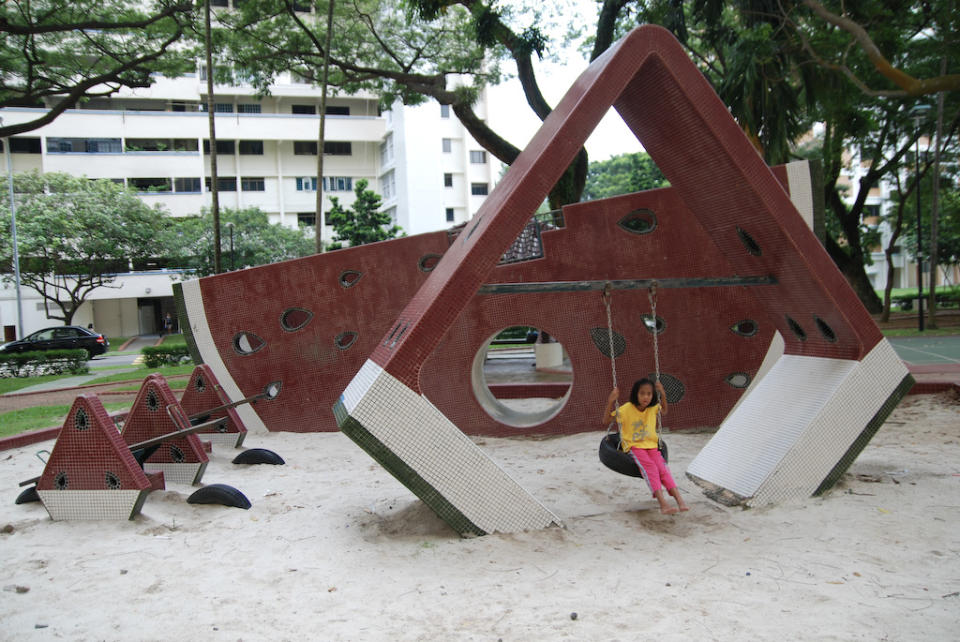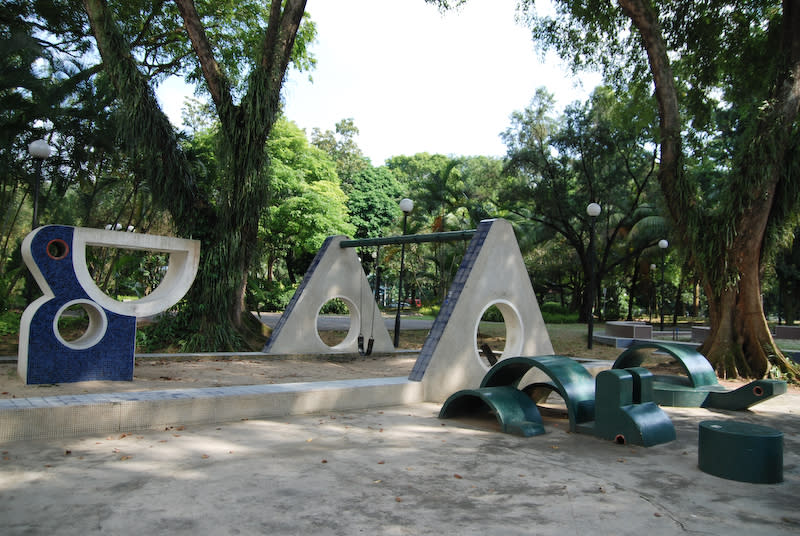Singapore playgrounds turn heritage icons in upcoming exhibition

This year, the National Museum of Singapore (NMS) is presenting a blockbuster exhibition on the historical development of Singapore’s playgrounds and projections of future playgrounds in Singapore.
Titled “The More We Get Together: Singapore’s Playgrounds 1930 – 2030” and running from 20 April to 30 September, the exhibition is developed by the museum in collaboration with the Housing Development Board.
The show will invite visitors to learn more about Singapore’s iconic dragon playgrounds of the 1970s, and modern playgrounds and the people who have built them.
In the ’70s, HDB began to build playgrounds that reflected Singapore’s culture and identity. One such design was the iconic dragon playground designed by Khor Ean Ghee, then HDB’s in-house designer. Others designs involved the quirky shapes of dove, pelican and even watermelon slices.

However, these old playgrounds were phased out since 1993 due to safety concerns and were gradually replaced by playgrounds imported from overseas.
Most recently, growing nostalgia has inspired calls to preserve the remaining few old designs still standing.
They have also become popular today as souvenir makers have turned them into knick-knacks. The dragon playground design was dubbed one of the Singaporean icons as part of the SG50 campaign in 2015.
Yahoo Lifestyle Singapore spoke to Justin Zhuang, writer who documented old playgrounds for Singapore Memory Project’s book Mosaic Memories in 2013, who is also involved in the upcoming NMS exhibition.
“(Old playground designs) are iconic because many use imagery familiar to Singaporeans and a generation who did not have smartphones and video games grew up playing in them. Unlike today’s playgrounds that are more abstract, many of the old playgrounds were easily recognisable sculptures of local fruits and animals,” said Zhuang.

Speaking with Yahoo Lifestyle Singapore, Dr Chua Ai Lin, vice-president of the Singapore Heritage Society, said that old playgrounds in public housing have a strong visual identity and are sites of social memories that many people connect with from having grown up with them.
“The strong attachment that the public have expressed for them is a clear statement that something new isn’t always more desirable,” she added.
Playgrounds have also been included as heritage sites in heritage trails launched during recent years such as the Toa Payoh Heritage Trail and Tampines Heritage Trail.
All these cumulative efforts to call playgrounds history after systematically tearing them down do raise some concerns, however.
Should playgrounds strive to become heritage icons?
Mizah Rahman, community organiser and designer, raised a concern about heritage overshadowing the purpose of play.
“Adding the additional element of heritage is unnecessary and adds to the already complex design process of designing a playground. Playgrounds should first and foremost serve their purpose of play and designing a good play experience is itself a challenging task for designers,” she said.
Zhuang agreed that playgrounds do not have to just be based on history.
“I’m all for playgrounds unique to each estate. This doesn’t have to be based just on history. The worry is we forget that playgrounds are also primarily sites of play and not just sculptures of national icons,” he said.

Chua said that these playgrounds should not be turned into untouched museum pieces.
“Their meaning derives from being embedded in the everyday lives of Singaporeans. Having the playgrounds continue to be used by many more families for a long time to come will allow them to be touchstones of common reference across the generations,” she said.
Nonetheless, there is acknowledgement that the new playgrounds may have inadvertently created the opportunity to focus on the “play” in playgrounds.
“Compared to old playgrounds, the new ones are arguably more ‘fun’ as they are more abstract and allow for imagination. This was not a stated intention of town councils when replacing the old ones though,” said Zhuang.
Moreover, there has been an effort to push for play spaces created by the community for the community to enjoy.
Mizah’s non-profit design organisation Participate in Design is involved in Hack Our Play (HOP), Singapore’s first programme geared towards creating temporary community-built play spaces. It is an initiative that lets children, educators, and parents co-create their very own play space, from start to finish during workshop sessions.
They have even created a HOP toolkit targeted at educators and other organisations, and hope to offer a starting point for others to create their own community-built play spaces in preschools or even under-utilised public spaces.
The government also unveiled Singapore’s first community-built playground in Sembawang Close with treehouse and kelong-like features in January this year.
“Under town councils, playgrounds were seen as amenities but now there is effort to use them to give places identities and use them as sites for community building again,” said Zhuang.
Follow Yahoo Lifestyle Singapore on Facebook.


